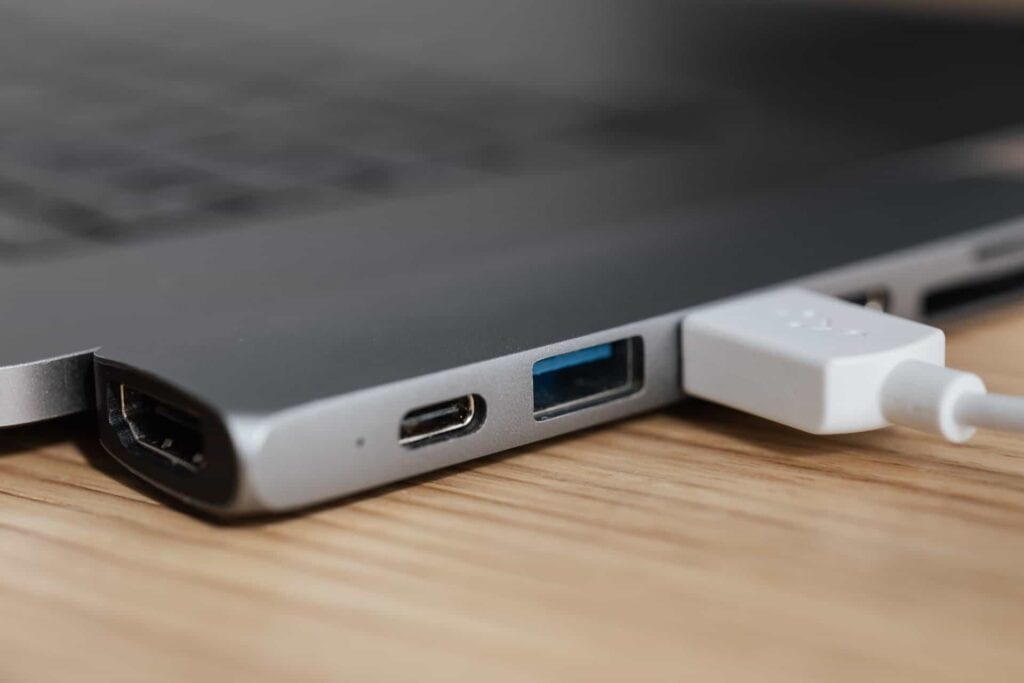USB Standards and Specifications: Understanding the Differences
USB, or Universal Serial Bus, is a widely-used interface for connecting devices to computers and other electronic devices. There are several different USB standards, each with its own specifications and capabilities. In this article, we’ll go over the different USB standards and how they differ in terms of speed, power delivery, and other features.
Quick overview of USB standards:
- USB 1.x: This was the first USB standard and it had a maximum transfer rate of 12 Mbps. It was introduced in 1996.
- USB 2.0: This standard was released in 2000 and had a maximum transfer rate of 480 Mbps. It was backward compatible with USB 1.x devices.
- USB 3.0: This standard was released in 2008 and had a maximum transfer rate of 5 Gbps. It was backward compatible with USB 2.0 devices.
- USB 3.1 Gen 1: This is essentially the same as USB 3.0, with a maximum transfer rate of 5 Gbps.
- USB 3.1 Gen 2: This standard was released in 2013 and had a maximum transfer rate of 10 Gbps. It is backward compatible with USB 3.0/3.1 Gen 1 devices.
- USB 3.2 Gen 1×1: This is essentially the same as USB 3.1 Gen 1, with a maximum transfer rate of 5 Gbps.
- USB 3.2 Gen 2×1: This is essentially the same as USB 3.1 Gen 2, with a maximum transfer rate of 10 Gbps.
- USB 4: This standard was released in 2019 and has a maximum transfer rate of 40 Gbps. It is backward compatible with USB 3.x and USB 2.0 devices.

Detailed overview of the USB standards:
- USB 1.0 and 1.1
The first USB standard, USB 1.0, was released in 1996. It was quickly replaced by USB 1.1, which offered some improvements over the original standard. USB 1.1 has a maximum data transfer rate of 12 Mbps, which is significantly slower than the later USB standards. It also does not support any power delivery capabilities.
- USB 2.0
USB 2.0, released in 2000, is the most widely-used USB standard today. It has a maximum data transfer rate of 480 Mbps, which is much faster than USB 1.1. USB 2.0 also supports limited power delivery capabilities, with a maximum output of 500 mA at 5V.
- USB 3.0
USB 3.0, also known as USB 3.1 Gen 1, was released in 2008. It has a maximum data transfer rate of 5 Gbps, which is ten times faster than USB 2.0. USB 3.0 also supports increased power delivery capabilities, with a maximum output of 900 mA at 5V.
- USB 3.1
USB 3.1, also known as USB 3.1 Gen 2, was released in 2013. It has a maximum data transfer rate of 10 Gbps, which is twice as fast as USB 3.0. USB 3.1 also supports more advanced power delivery capabilities, with a maximum output of 100W at 20V.
- USB 3.2
USB 3.2, released in 2017, is an extension of USB 3.1 that introduces two new modes of operation: 10 Gbps and 20 Gbps. USB 3.2 supports the same power delivery capabilities as USB 3.1.
- USB 4.0
USB 4.0, released in 2019, is the latest USB standard. It has a maximum data transfer rate of 40 Gbps, which is four times faster than USB 3.2. USB 4.0 also introduces more advanced power delivery capabilities, with a maximum output of 100W at 40V.
Additional factors:
In terms of power delivery, USB 1.x and 2.0 provide up to 500mA of power, while USB 3.0 and later versions can provide up to 900mA of power. Additionally, USB 3.0 and later versions introduced the concept of “charging downstream ports” (CDPs) and “dedicated charging ports” (DCPs), which allow for faster charging of devices.
Each USB standard also has different connector types, with the most common being Type-A, Type-B, Micro-USB, Mini-USB, and Type-C. USB Type-C is the newest connector type and is reversible, meaning it can be inserted into a device in any orientation. It also supports higher power delivery and data transfer rates compared to other connector types.
Other USB specifications:
In addition to these USB standards, there are also several other USB specifications that provide additional capabilities. These include:
- USB Power Delivery (USB PD): A specification that enables more advanced power delivery capabilities, including the ability to charge laptops and other high-power devices.
- USB Type-C: A specification for the physical connector used by USB devices. USB Type-C supports USB PD and other advanced features, including support for DisplayPort and Thunderbolt.
- USB On-The-Go (USB OTG): A specification that enables USB devices to act as hosts, allowing them to connect to other USB devices without the need for a computer.
In conclusion, understanding the different USB standards and specifications is important for choosing the right USB devices and ensuring compatibility with your other devices. From the original USB 1.1 to the latest USB 4.0, each USB standard offers different speeds and power delivery capabilities, so it’s important to choose the right one for your needs.

